Grow spinach at home, even if you think you don’t have a green thumb! I know, I know, the idea of cultivating your own leafy greens might seem daunting, reserved for seasoned gardeners with sprawling backyards. But trust me, it’s easier than you think, and incredibly rewarding. Imagine stepping outside your door and harvesting fresh, vibrant spinach for your salad, smoothie, or favorite saut茅ed dish.
Spinach has a rich history, dating back over 2,000 years to ancient Persia. It gradually made its way across the globe, becoming a staple in cuisines worldwide. Beyond its culinary versatility, spinach is packed with nutrients, making it a powerhouse of health benefits. But why rely on store-bought spinach that might be days old and treated with who-knows-what?
That’s where this DIY guide comes in! We’re going to unlock the secrets to successfully grow spinach at home, regardless of your space or experience level. Whether you have a sprawling garden, a sunny balcony, or just a windowsill, I’ll show you simple, effective tricks and hacks to cultivate your own thriving spinach patch. Say goodbye to wilted, expensive spinach from the grocery store and hello to fresh, delicious, homegrown goodness. Let’s get started!
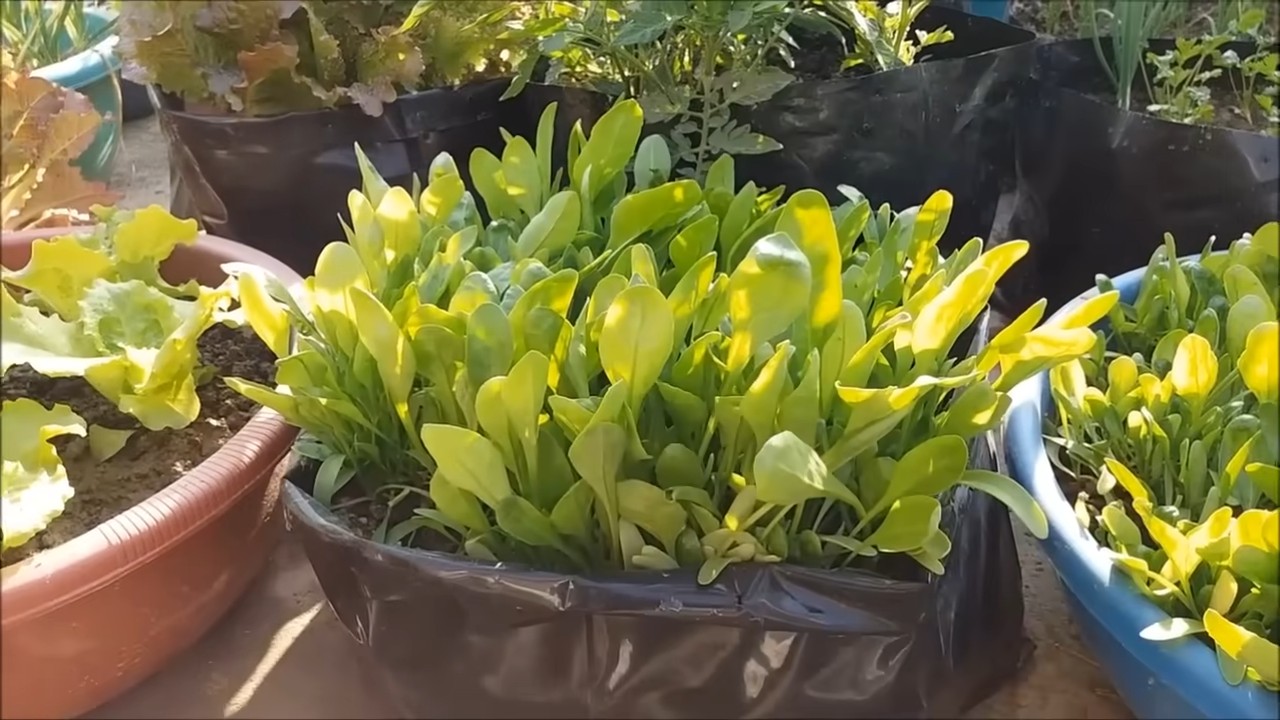
Growing Spinach at Home: A Beginner’s Guide
Okay, so you want to grow your own spinach? Awesome! Fresh, homegrown spinach is so much tastier than the stuff you get at the store, and it’s surprisingly easy to cultivate, even if you don’t have a huge garden. I’m going to walk you through everything you need to know, from choosing the right variety to harvesting your leafy greens. Let’s get started!
Choosing Your Spinach Variety
First things first, let’s talk about spinach varieties. There are a few different types, and some are better suited for certain climates or growing conditions than others. Here’s a quick rundown:
* Savoy Spinach: This is the kind you usually see in the grocery store. It has crinkled, curly leaves and a slightly stronger flavor. It’s pretty cold-hardy.
* Semi-Savoy Spinach: A good middle ground. It has slightly crinkled leaves, not as pronounced as Savoy, and is easier to clean. It’s also fairly cold-hardy and disease-resistant.
* Smooth-Leaf Spinach: As the name suggests, this type has smooth, flat leaves. It’s the easiest to clean and often preferred for processing. It tends to bolt (go to seed) more quickly in hot weather than other varieties.
* Malabar Spinach: Technically not a true spinach, but it’s grown and used similarly. It thrives in hot weather and has thick, fleshy leaves. It’s a vine, so you’ll need to provide support for it to climb.
For beginners, I usually recommend a semi-savoy variety like ‘Tyee’ or ‘Bloomsdale Long Standing’. They’re relatively easy to grow and offer good disease resistance. If you live in a warmer climate, consider Malabar spinach or a bolt-resistant variety like ‘Slow Bolt’.
Preparing Your Planting Area
Spinach needs a good foundation to thrive. Here’s how to get your planting area ready:
* Sunlight: Spinach loves sunshine, but it can also tolerate partial shade, especially in warmer climates. Aim for at least 4-6 hours of sunlight per day.
* Soil: Well-drained soil is crucial. Spinach doesn’t like soggy roots. The ideal soil pH is between 6.5 and 7.0.
* Amendments: Before planting, amend your soil with compost or well-rotted manure. This will provide essential nutrients and improve drainage.
Planting Your Spinach
Now for the fun part! Here’s how to plant your spinach seeds:
1. Timing is Key: Spinach is a cool-season crop, meaning it grows best in cooler temperatures. Plant your seeds in early spring (as soon as the soil can be worked) or in late summer/early fall for a fall/winter harvest. Avoid planting during the hottest part of the summer, as spinach tends to bolt in high heat.
2. Direct Sowing: Spinach is best direct-sown, meaning you plant the seeds directly into the ground. It doesn’t transplant well.
3. Sowing Depth: Plant the seeds about 陆 inch deep and 1 inch apart.
4. Row Spacing: Space your rows about 12-18 inches apart.
5. Watering: Gently water the planting area after sowing. Keep the soil consistently moist until the seeds germinate.
6. Germination: Spinach seeds typically germinate in 5-10 days, depending on the temperature.
Caring for Your Spinach Plants
Once your spinach seedlings emerge, it’s important to provide them with proper care to ensure a healthy and abundant harvest.
* Watering: Spinach needs consistent moisture, especially during dry spells. Water deeply whenever the top inch of soil feels dry. Avoid overhead watering, as this can promote fungal diseases.
* Thinning: Once your seedlings are a few inches tall, thin them to about 3-6 inches apart. This will give them enough room to grow and prevent overcrowding. You can eat the thinnings!
* Weeding: Keep your spinach patch free of weeds. Weeds compete with spinach for nutrients and water. Gently hand-pull weeds to avoid disturbing the spinach roots.
* Fertilizing: Spinach is a heavy feeder, so it benefits from regular fertilization. Side-dress your plants with a nitrogen-rich fertilizer, such as blood meal or fish emulsion, every 2-3 weeks. Follow the instructions on the fertilizer package.
* Pest Control: Spinach can be susceptible to certain pests, such as aphids, leaf miners, and flea beetles. Inspect your plants regularly for signs of infestation. If you find pests, try spraying them with insecticidal soap or neem oil. You can also cover your plants with row covers to prevent pests from reaching them.
* Bolting Prevention: As I mentioned earlier, spinach tends to bolt (go to seed) in hot weather. Bolting makes the leaves bitter and unpalatable. To prevent bolting, try planting bolt-resistant varieties, providing shade during the hottest part of the day, and keeping the soil consistently moist. You can also harvest your spinach frequently to encourage new growth and delay bolting.
Harvesting Your Spinach
The best part! You can start harvesting your spinach leaves as soon as they are large enough to eat, usually about 4-6 weeks after planting.
1. Harvesting Method: You can harvest individual leaves or cut the entire plant at the base. If you harvest individual leaves, the plant will continue to produce new leaves.
2. Harvesting Time: Harvest your spinach in the morning, when the leaves are crisp and cool.
3. Washing and Storing: Wash your spinach thoroughly to remove any dirt or debris. Store it in a plastic bag in the refrigerator. It will keep for several days.
Troubleshooting Common Spinach Problems
Even with the best care, you might encounter some problems while growing spinach. Here are a few common issues and how to address them:
* Yellowing Leaves: This could be a sign of nutrient deficiency, overwatering, or disease. Check the soil drainage, fertilize your plants, and inspect them for signs of disease.
* Slow Growth: This could be due to insufficient sunlight, poor soil, or cool temperatures. Make sure your plants are getting enough sunlight, amend the soil with compost, and consider using row covers to warm the soil.
* Pest Infestation: As mentioned earlier, spinach can be susceptible to various pests. Inspect your plants regularly and take action promptly if you find any pests.
* Bolting: This is a common problem in hot weather. Plant bolt-resistant varieties, provide shade, and keep the soil moist to prevent bolting.
Growing Spinach in Containers
Don’t have a garden? No problem! You can easily grow spinach in containers.
1. Choosing a Container: Select a container that is at least 6 inches deep and wide. Make sure it has drainage holes.
2. Potting Mix: Use a high-quality potting mix that is well-draining.
3. Planting: Plant your spinach seeds as described above.
4. Watering: Water your container spinach regularly, as it will dry out more quickly than spinach grown in the ground.
5. Fertilizing: Fertilize your container spinach every 2-3 weeks with a liquid fertilizer.
6. Location: Place your container in a sunny location that receives at least 4-6 hours of sunlight per day.
Extending Your Spinach Season
Want to enjoy fresh spinach for as long as possible? Here are a few tips for extending your spinach season:
* Succession Planting: Plant new spinach seeds every 2-3 weeks to ensure a continuous harvest.
* Cold Frames: Use cold frames or row covers to protect your spinach plants from frost and extend the growing season into the winter.
* Overwintering: In mild climates, you can overwinter spinach plants by covering them with a thick layer of mulch. They will start growing again in the spring.
Spinach Recipes to Enjoy
Now that you’ve grown your own spinach, it’s time to enjoy it! Here are a few of my favorite spinach recipes:
* Spinach Salad: A classic! Combine fresh spinach with your favorite toppings, such as berries, nuts, cheese, and a vinaigrette dressing.
* Spinach and Artichoke Dip: A crowd-pleaser! This creamy dip is perfect for parties or gatherings.
* Spinach Smoothie: A healthy and delicious way to start your day! Blend spinach with fruits, yogurt, and other ingredients.
* Saut茅ed Spinach: A simple and flavorful side dish. Saut茅 spinach with garlic, olive oil, and a pinch of salt and pepper.
* Spinach Quiche: A hearty and satisfying meal. Combine spinach with eggs, cheese, and other ingredients in a flaky crust.
Final Thoughts
Growing your own spinach is
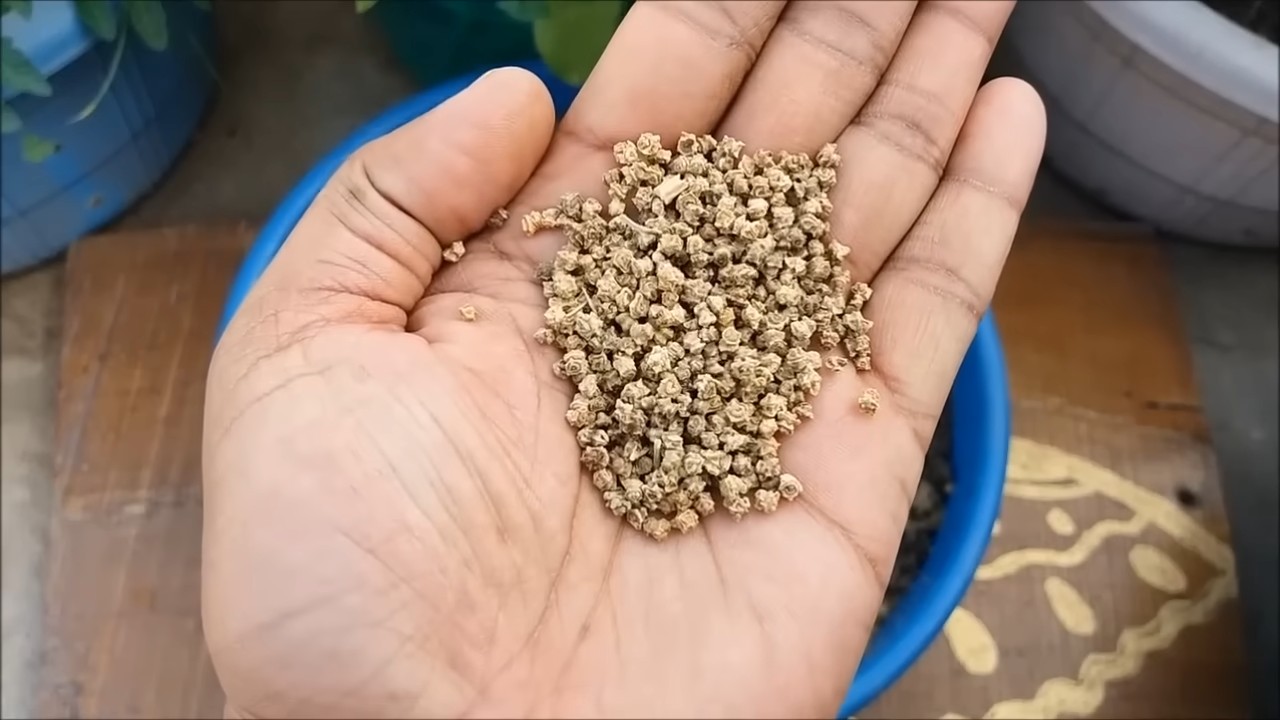
Conclusion
So, there you have it! Growing spinach at home is not only achievable but also incredibly rewarding. Forget those limp, pre-packaged greens from the supermarket. Imagine stepping into your garden or onto your balcony and harvesting vibrant, crisp spinach leaves bursting with flavor and nutrients. This DIY trick transforms the way you think about fresh produce, putting control back into your hands and offering a sustainable, cost-effective alternative to store-bought options.
Why is this a must-try? Because it’s about more than just saving money. It’s about knowing exactly where your food comes from, minimizing your environmental impact, and enjoying the unparalleled taste of freshly harvested spinach. The satisfaction of nurturing a plant from seed to table is a unique experience that connects you to the natural world in a profound way. Plus, homegrown spinach is often more tender and flavorful than anything you can find in a grocery store.
But the benefits don’t stop there. Growing your own spinach allows you to experiment with different varieties. Try ‘Bloomsdale Long Standing’ for its classic flavor and heat tolerance, or ‘Red Cardinal’ for its beautiful red-veined leaves that add a pop of color to your salads. You can even explore baby spinach varieties for a milder, more delicate taste.
Consider these variations to personalize your spinach-growing experience:
* **Container Gardening:** If you’re short on space, spinach thrives in containers. Choose a pot that’s at least 6 inches deep and wide, and use a well-draining potting mix. This is perfect for balconies, patios, or even sunny windowsills.
* **Succession Planting:** To ensure a continuous harvest, plant new spinach seeds every few weeks. This way, you’ll always have a fresh supply of greens throughout the growing season.
* **Companion Planting:** Spinach grows well alongside other vegetables like radishes, lettuce, and strawberries. These companion plants can help deter pests and improve the overall health of your garden.
* Hydroponics: For a more advanced approach, consider growing spinach hydroponically. This method uses nutrient-rich water instead of soil, allowing for faster growth and higher yields.
Don’t be intimidated if you’re a beginner. Growing spinach is surprisingly easy, and even a small patch can provide you with a significant amount of fresh greens. The key is to provide the right conditions: cool temperatures, well-drained soil, and plenty of sunlight.
We wholeheartedly encourage you to try this DIY trick and experience the joy of growing your own spinach. It’s a simple, sustainable, and incredibly rewarding way to enhance your diet and connect with nature. Once you taste the difference between homegrown and store-bought spinach, you’ll never go back!
So, grab some seeds, find a sunny spot, and get ready to enjoy the freshest, most delicious spinach you’ve ever tasted. And most importantly, we want to hear about your experience! Share your tips, tricks, and photos with us in the comments below. Let’s build a community of home spinach growers and inspire others to embrace the joys of gardening. Let us know what varieties you tried, what challenges you faced, and what successes you celebrated. Your feedback will help us refine this guide and empower even more people to grow their own food. Happy growing!
Frequently Asked Questions (FAQ)
What is the best time of year to plant spinach?
Spinach is a cool-season crop, meaning it thrives in cooler temperatures. The best time to plant spinach is in early spring or early fall. In the spring, plant as soon as the soil can be worked, typically 4-6 weeks before the last expected frost. For a fall harvest, plant 6-8 weeks before the first expected frost. Avoid planting spinach during the heat of summer, as high temperatures can cause it to bolt (go to seed) and become bitter.
How much sunlight does spinach need?
Spinach needs at least 3-6 hours of sunlight per day. While it can tolerate some shade, especially during the hottest part of the day, more sunlight will result in better growth and a more abundant harvest. If you’re growing spinach indoors, place it near a sunny window or use grow lights to supplement natural light.
What kind of soil is best for growing spinach?
Spinach prefers well-drained soil that is rich in organic matter. The ideal soil pH is between 6.5 and 7.0. Before planting, amend the soil with compost or other organic matter to improve drainage and fertility. Avoid heavy clay soils, as they can become waterlogged and inhibit root growth. If you have clay soil, consider growing spinach in raised beds or containers.
How often should I water spinach?
Spinach needs consistent moisture to thrive. Water deeply whenever the top inch of soil feels dry to the touch. Avoid overwatering, as this can lead to root rot. During hot weather, you may need to water more frequently. Mulching around the plants can help retain moisture and keep the soil cool.
How do I prevent spinach from bolting?
Bolting is when spinach prematurely goes to seed, which can make the leaves bitter. To prevent bolting, choose bolt-resistant varieties, plant in early spring or fall, and provide shade during the hottest part of the day. Consistent watering and proper soil fertility can also help prevent bolting. If you notice flower stalks forming, pinch them off to prolong the harvest.
What are some common pests and diseases that affect spinach?
Some common pests that affect spinach include aphids, leaf miners, and flea beetles. Aphids can be controlled with insecticidal soap or a strong spray of water. Leaf miners can be managed by removing infested leaves. Flea beetles can be deterred with row covers or diatomaceous earth. Common diseases that affect spinach include downy mildew and white rust. To prevent these diseases, choose disease-resistant varieties, provide good air circulation, and avoid overhead watering.
When and how should I harvest spinach?
Spinach can be harvested as soon as the leaves are large enough to eat, typically about 4-6 weeks after planting. You can harvest individual leaves or cut the entire plant at the base. For a continuous harvest, harvest the outer leaves first, allowing the inner leaves to continue growing. Harvest spinach in the morning, when the leaves are crisp and cool.
Can I grow spinach indoors?
Yes, spinach can be grown indoors, especially during the winter months. Choose a sunny window or use grow lights to provide adequate light. Use a well-draining potting mix and water regularly. Indoor spinach may not grow as large as outdoor spinach, but it can still provide a fresh supply of greens.
How do I store harvested spinach?
To store harvested spinach, wash it thoroughly and pat it dry. Store it in a plastic bag or container in the refrigerator. Spinach is best used within a few days of harvesting. You can also freeze spinach for longer storage. To freeze spinach, blanch it in boiling water for 2 minutes, then plunge it into ice water. Drain well and store in freezer bags or containers.
Is homegrown spinach more nutritious than store-bought spinach?
Homegrown spinach is often more nutritious than store-bought spinach because it is harvested at its peak ripeness and consumed shortly thereafter. Store-bought spinach may have been harvested days or even weeks before it reaches your table, during which time it can lose nutrients. Growing your own spinach also allows you to control the growing conditions and avoid the use of pesticides and herbicides.

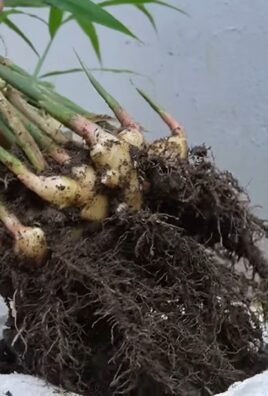
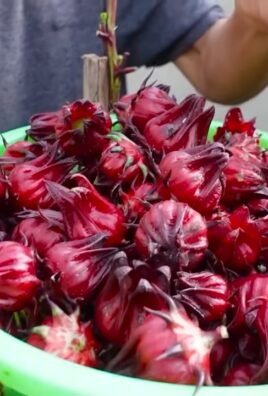
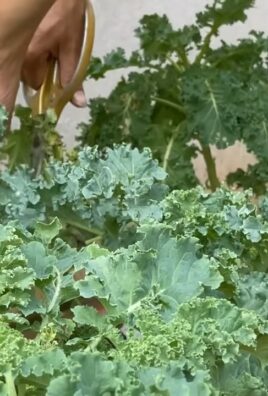
Leave a Comment